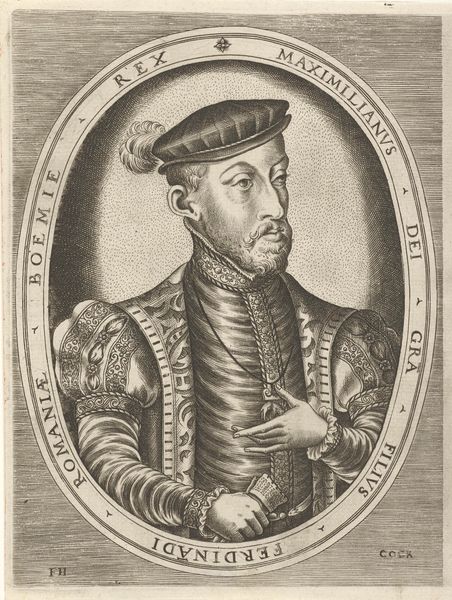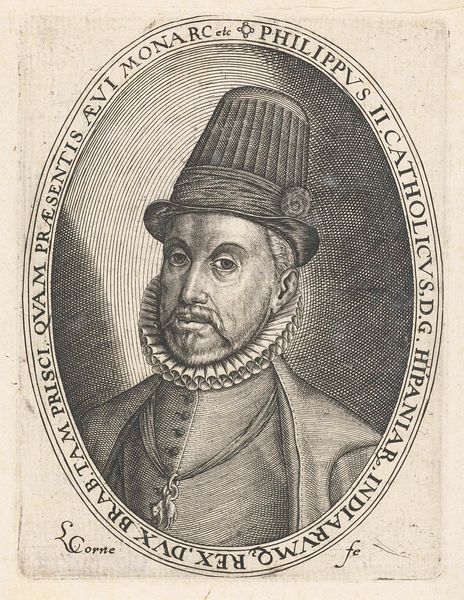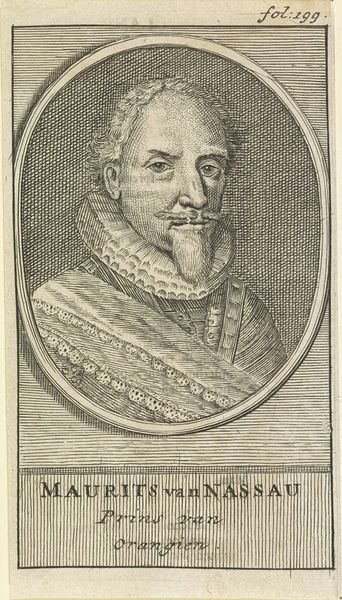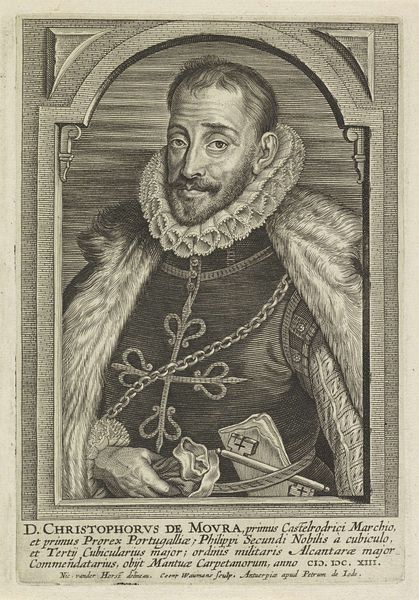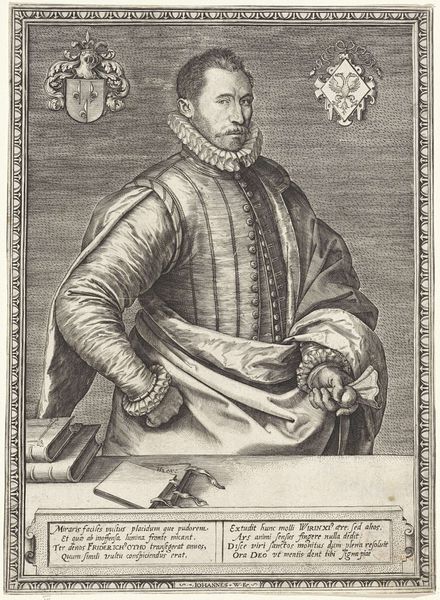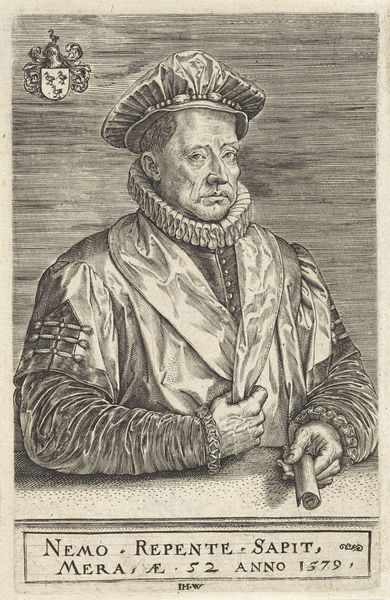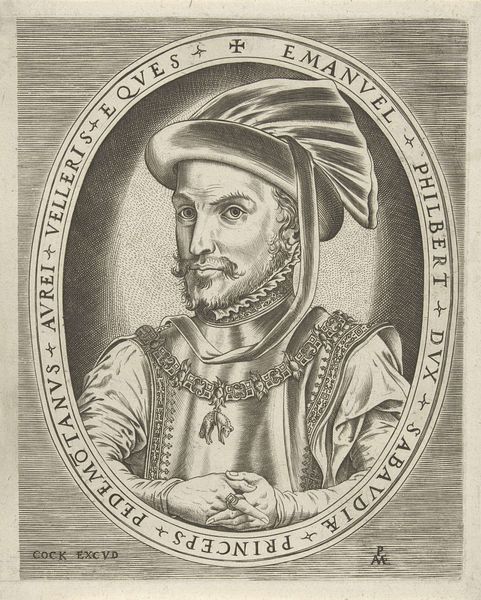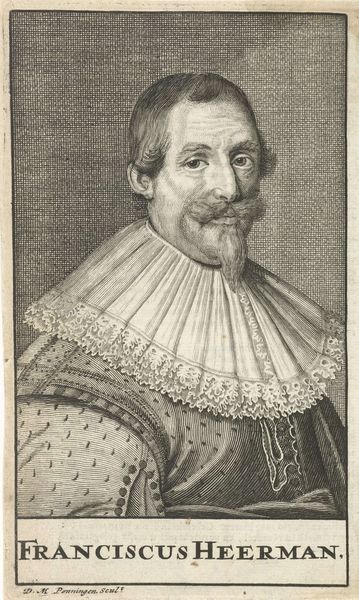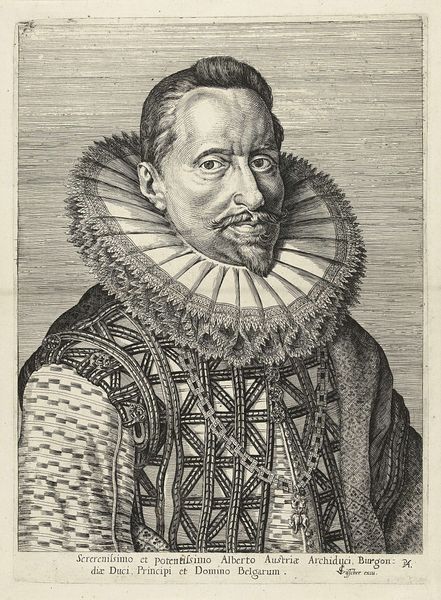
print, engraving
#
portrait
#
baroque
# print
#
historical fashion
#
engraving
Dimensions: height 131 mm, width 76 mm
Copyright: Rijks Museum: Open Domain
Curator: Here we have a 17th-century engraving titled "Buste van Philibert van Châlon, prins van Oranje," attributed to an anonymous artist. The subject is presented as a bust upon a pedestal. What strikes you initially about the work, Editor? Editor: Well, the severity, of course! Look at that resolute gaze, framed by that almost intimidating ruff. It's a statement of power, isn't it? That calculated detachment that seems prevalent in a Baroque portrait. Curator: Indeed. The composition is quite structured, emphasizing verticality. Notice the linear patterns created through the engraving technique. These meticulously drawn lines define form and texture in absence of color, but moreover imbue the piece with a kind of static formalism. Consider how each line has a purposeful effect. Editor: Those patterns, though… They also suggest an adherence to order and hierarchy so intrinsic to courtly life at the time. Look at the detail in the prince’s attire – each layer of clothing symbolizes status. This ruff, hat, the patterned doublet... all communicate belonging and self-representation. It also indicates a reverence toward emblems and heraldry within the iconography of Baroque aristocracy. Curator: Yes, precisely! These details work cohesively within the frame. Note also that the artist has managed to simulate the nuances of light and shadow solely with line variation to give us a robust representation of Philibert's facial features. This careful detailing shows us a clear structure where detail works to bring together this composition. Editor: Thinking more on this composition... Do you notice the subject's somewhat detached expression? In iconography, such presentation wasn't just about physical appearance, but about embodying power and lineage. Philibert van Châlon is not just a man but an emblem. A symbolic distillation of what princely rule intended to mean to others, that would represent the ruling class in visual symbols! Curator: So well observed! Thank you for pointing out what I overlooked! The lack of dynamism pushes viewers toward analytical introspection of composition, structure and material representation! Editor: Always! It's pieces like this where, looking deeply at its imagery, we reveal just how our memories connect us to history.
Comments
No comments
Be the first to comment and join the conversation on the ultimate creative platform.
